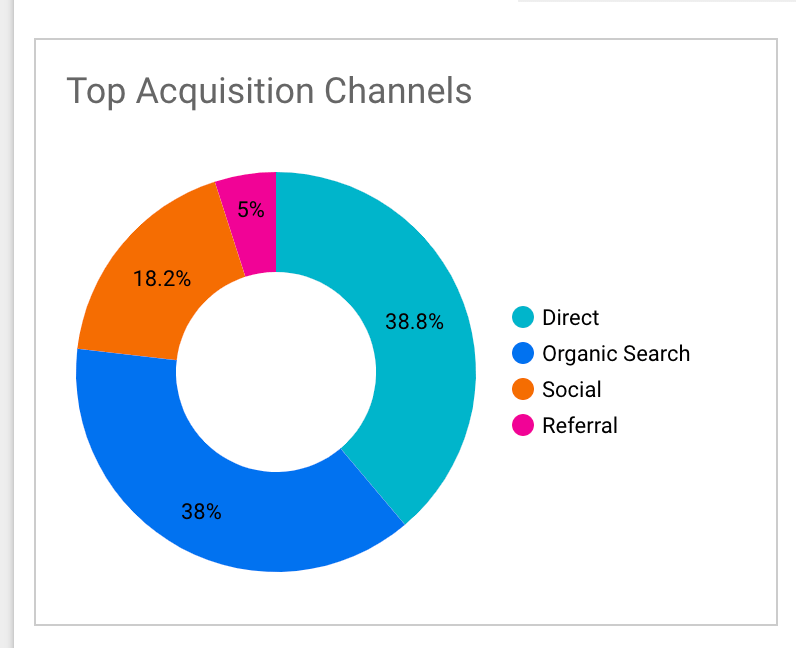Understanding Direct Traffic in Google Analytics
In today’s digital age, website traffic is the lifeblood of online businesses. Every website owner strives to attract visitors and convert them into customers. One of the key metrics used to measure website performance is direct traffic. In this article, we will delve into the concept of direct traffic in Google Analytics and explore strategies to boost your website’s direct traffic.

What is Direct Traffic?
Direct traffic refers to visitors who land on your website by directly typing your URL into their browser, using bookmarks, or clicking on untraceable links, such as links in mobile applications or offline documents. Essentially, direct traffic represents users who already know about your website or have it saved as a favorite.
Direct traffic in Google Analytics refers to the visits to a website that occur when a user types the website URL directly into their browser’s address bar or uses a bookmark to access the site. It represents visitors who arrive at the website without clicking on a referral link from another website, search engine, or any other source.
Direct traffic is attributed to users who are already familiar with the website and have chosen to navigate directly to it, rather than following a link. It typically includes regular visitors, loyal customers, and those who have the website bookmarked for quick access.
It’s important to note that direct traffic can also include visits from sources that are not properly tracked by Google Analytics, such as some mobile apps or email clients. In these cases, the traffic may be labeled as direct due to technical limitations or privacy settings.
Monitoring direct traffic in Google Analytics provides insights into the number of visitors who directly access a website, helping website owners understand the effectiveness of offline marketing efforts, brand recognition, and user loyalty.
Importance of Direct Traffic
Direct traffic holds significant value for website owners. It signifies brand awareness, customer loyalty, and a strong online presence. When users directly type your URL, it shows that they are familiar with your brand and actively seek out your website. Consequently, direct traffic can be a reflection of your website’s reputation and the effectiveness of your offline marketing efforts.
Enhancing Direct Traffic
Now that we understand the importance of direct traffic, let’s explore some strategies to enhance it and strengthen your website’s online presence.
1. Brand Building and Awareness
Investing in brand building activities is crucial for increasing direct traffic. Establish a strong brand identity, develop a memorable logo, and create engaging content that resonates with your target audience. Consistency in branding across all marketing channels will help improve brand recognition and encourage users to visit your website directly.
2. Offline Marketing
Offline marketing plays a significant role in driving direct traffic. Utilize traditional advertising channels such as television, radio, print media, and billboards to promote your website’s URL. Including your website address in all offline marketing materials will make it easier for potential customers to remember and directly access your site.
3. Email Marketing Campaigns
Email marketing remains an effective strategy to nurture customer relationships and boost direct traffic. Encourage your existing customer base to visit your website by sending out personalized newsletters, exclusive promotions, and relevant content. Including clear call-to-action buttons and direct links to your website will increase the chances of users visiting your site directly.
4. Social Media Engagement
Social media platforms provide excellent opportunities to engage with your audience and drive direct traffic. Develop a strong social media presence by sharing valuable content, interacting with followers, and promoting your website through posts and advertisements. Encourage social media users to visit your website by incorporating direct links and compelling calls-to-action.
5. Influencer Partnerships
Collaborating with influential figures in your industry can significantly impact your direct traffic. Seek out relevant influencers who align with your brand values and target audience. Partner with them to create sponsored content, host giveaways, or collaborate on projects that drive their followers to visit your website directly.
6. Offline Events and Partnerships
Participating in offline events, trade shows, and partnerships can help drive direct traffic to your website. Attend industry conferences and exhibitions, host workshops, or sponsor events to increase brand visibility. Use these opportunities to distribute marketing materials that prominently feature your website URL.
Conclusion
Direct traffic is a vital component of a successful website strategy. By implementing the strategies mentioned above, you can boost your website’s direct traffic and improve its overall performance. Remember, a strong online presence coupled with effective branding efforts and marketing initiatives will contribute to a higher number of users visiting your website directly.
Are you ready to elevate your website’s performance and boost your online visibility?
Look no further than this San Diego SEO company! Our team of experts in San Diego is here to provide top-notch SEO services tailored to your business needs. From comprehensive keyword research to effective content optimization and strategic backlink management, we’ve got you covered. Don’t miss out on the opportunity to drive more organic traffic and increase conversions. Contact Jen Ruhman SEO today and let us take your website to new heights!

